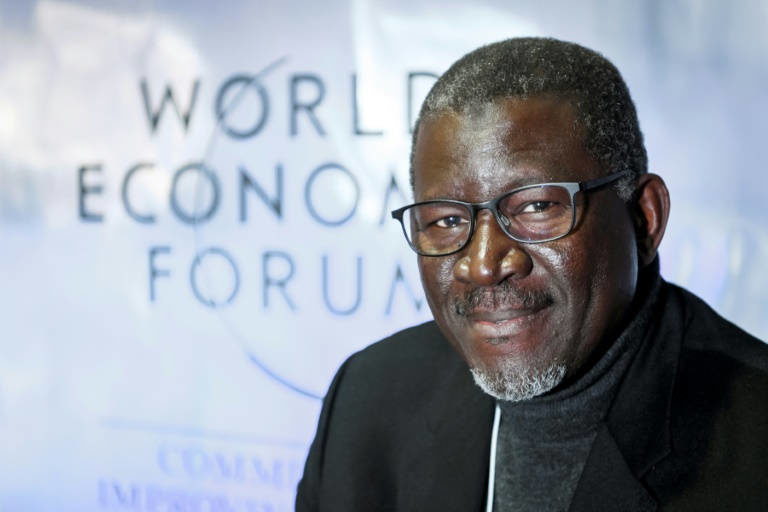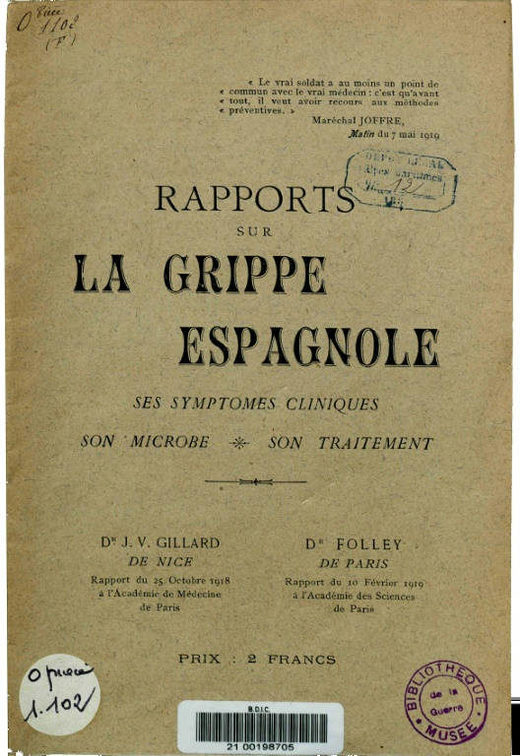
"Pandemics are becoming a real threat to humanity," Elhadj As Sy, secretary general of the International Federation of Red Cross and Red Crescent Societies, told AFP at the World Economic Forum in the Swiss resort.
One Davos discussion titled "Are We Ready For the Next Pandemic?" was joined by experts including Sylvie Briand, a specialist in infectious diseases at the World Health Organisation (WHO).
"We know that it is coming, but we have no way of stopping it," she said.
This year marks the centenary of the worst epidemic in history: the so-called Spanish flu -- an outbreak that experts say was actually imported to Europe by troops from the United States coming to fight in World War One.
Across the world, the disease killed more people in two years than the four years of fighting had.
Richard Hatchett, director of the public-private Coalition for Epidemic Preparedness Innovations (CEPI), said India lost five percent of its population in 1918 -- the only time in the country's history that its population declined.
A century on, a new flu virus is the risk that most worries experts.
"The flu is a respiratory virus that is easily transmitted and people can be contagious even before they show symptoms, so it is not easy to control," said Briand.
Its numerous forms are also able to "marry" one another or bond with viruses from birds or pigs in potentially deadly new combinations.
Still vulnerable

More recent epidemics have reminded the world that it is still vulnerable to outbreaks.
The SARS respiratory virus killed some 770 people in 2003.
"These past three years, there has been Ebola in West Africa, zika in South America and more recently a plague epidemic in Madagascar" last year, said Sy.
Ebola haemorraghic fever killed 11,000 in West Africa in 2014 and 2015. The disease also spread around the world after international travelers were infected.
"Humanity is more vulnerable in the face of epidemics because we are much more connected and we travel around much more quickly than before," said Briand. "When we travel, the viruses travel with us."
Hatchett warned that disease specialists are still dealing with the consequences of zika, a mosquito-borne disease which causes birth defects.
The outbreak in Latin America in 2015 took scientists by surprise.
Preparing for catastrophe
Experts also warned of the economic impact of outbreaks.
In 2015 hundreds of cases of the MERS respiratory syndrome cost South Korea 10 billion dollars, Hatchett said.
Billionaire philanthropist and Microsoft founder Bill Gates estimated in February 2017 that preparing to respond to a global pandemic would cost $3.4 billion a year.
The potential cost of one if the world is unprepared could be $570 billion, he said.
Gates is one of the main backers of the CEPI, which has overall funding of $700 million and was launched at last year's Davos summit.
The CEPI is seeking to develop treatments for three viruses for which there is currently none: MERS (Middle East Respiratory Syndrome), Lassa fever which is endemic in West Africa, and Nipah in Malaysia and Bangladesh.
"At the WHO, we are trying to prepare for a catastrophe, hoping to reduce the impact as much as possible," said Briand.
Developing a vaccine against a new virus, however, is dangerous and can take up to six months, the WHO says.
It costs up to $200 million, says Peter Piot, director of the London School of Hygiene and Tropical Medicine.
That is not a big motivation for pharmaceutical laboratories, Hatchett said.
"There is no commercial market for these products until there is an epidemic and then everyone wants the vaccine that doesn't exist."



Comment: Preparation for global pandemics for these officials always seems to amount to having a vaccine. It would be nice if research was happening where alternatives to dangerous vaccines of questionable efficacy were taken seriously. See also: